Applying UX Methodology
THE USER EXPERIENCE
The entire user experience (UX) centered approach continues to gain swift momentum across multiple industries and functionalities, and why not? This protocol brings a by-design approach towards meeting customer expectations. It emphasizes how users engage and interact with products rather than simply focusing on product/service quality.
This strategy validates the importance of a brand and how we align customers with the idea of “One Brand, One Voice”. In effect, UX-inspired strategies help ground your company’s mission and values and set a tone for your culture. You are a product of your (built) environment, and a branded environment helps positively shape that experience.
Ever wonder why grocery stores are designed the way they are? Why the milk is placed in the very back? It’s because humans are shaped by their environment and the grocery store wants to make sure you shop through the store before getting to this essential item in the back. The placement of products in certain areas and the flow of customer migration all help shape a user’s experience.
THE USER EXPERIENCE
To discuss the Interiors Brand Experience (also commonly referred to as “Environmental Branding) let’s establish a common understanding. This is where the built environment encapsulates your brand’s voice and persona to afford the audience an immersive, interactive experience like no other. You might think of logos, colors, or fonts, but a true brand experience is much more than that. It is how customers think and feel about you.
A brand is a thoughtful story, that taps into as many senses as possible. Yes, this includes interior and exteriors architecture, finishes, material palettes, graphic imagery, technology, and various décor—these can all support the branded message and emotion you are trying to convey.
And why is this important? We like the way Seth Godin, a national branding expert puts it:
The in-person Interiors Brand Experience cannot be underestimated in its ability to galvanize those expectations, memories, stories, and relationships. This is the ultimate intersection of brand and building.
Everyone’s space has the opportunity to communicate their position. What does your space say?

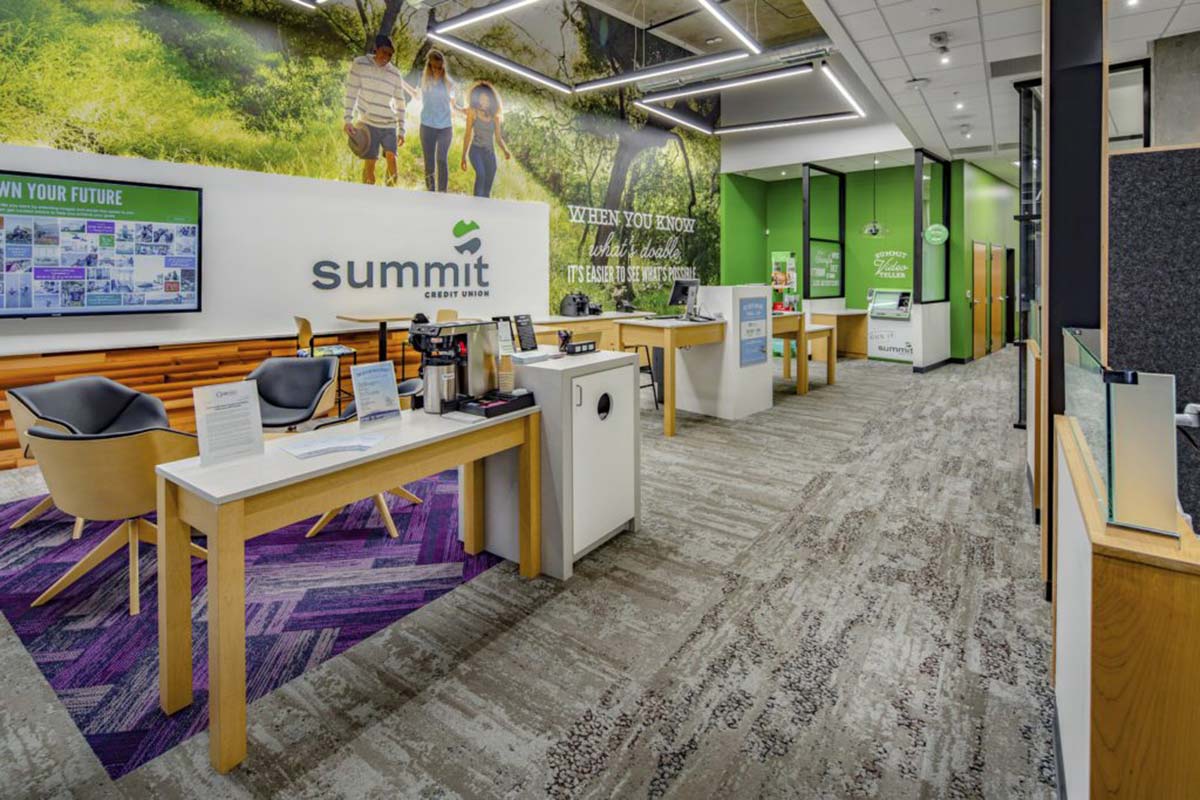
Summit Credit Union seeks to create a memorable and inviting experience for its members. They spark inspiration through their spaces and this is shown through their unique Interior Brand Experience. Each branch of Summit has a different demographic and a different message they want to convey-all of which comes together under the umbrella of Summit Credit Union.
THE THREE C’S: CUSTOMERS, COLLEAGUES, AND COMMUNITIES
Your buildings, facilities, and surrounding grounds are excellent opportunities for a UX/Interiors Brand Experience. A creatively designed space imprints and reinforces a positive impression with three key users: Customers, Colleagues, and Communities. A sampling of associated benefits that an Interiors Brand Experience offers each group is shared below.
Successful UX practices are predicated upon feelings. Thoughtfully created Interior Brand Experiences positively enhance those feelings. Our emotional processes guide (or bias) our behavior, particularly decision-making1. The inherent value of a userbase’s feelings lies in its ability to shape their perception of a brand and solidify loyalty and future interaction.
- Shapes perception that consumers have of a brand
- Solidifies loyalty and future interaction
- Feel a connection to the company
- Sets a tone for a company’s employees and culture
- Grounds the company’s mission and values
- Part of one cohesive team with a shared goal
- Offers credibility in the community
- Feels consistent and familiar with the different elements of the brand
THE KEY TO SUCCESS
Successfully branded companies have one thing in common: passion. They have a true genuine belief in their mission. Their goal isn’t just to connect with a client/customer but connect with their people—the people who believe in what they do.
This means that in order for an Interior Brand Experience to succeed a thorough understanding of your mission is essential. Being able to convey to designers what your mission is, is necessary for taking the right steps in the right direction.
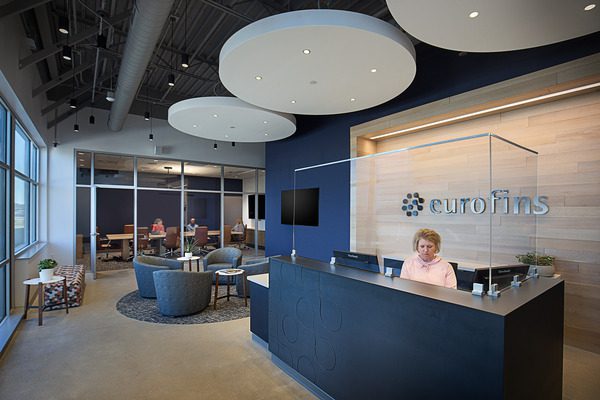
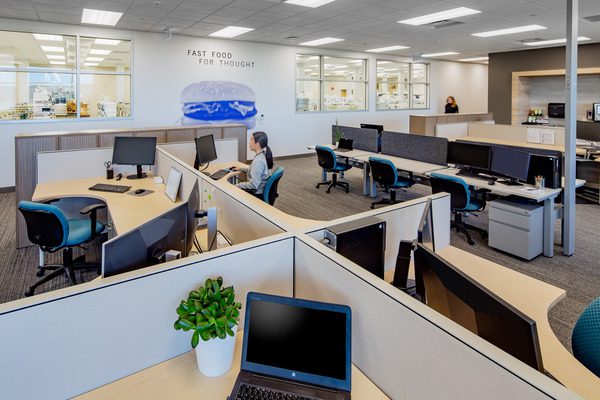
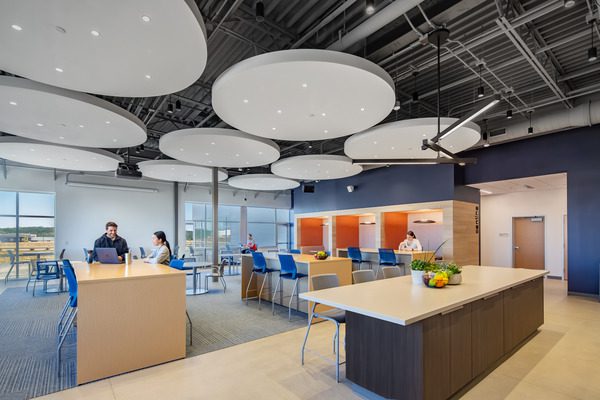
The Eurofins Food Testing Lab took a different approach to a branded environment. Consumers/members were not a focus, but the employees and people touring this facility were.
FROM VISION TO PROCESS
FROM VISION TO PROCESS
- A UX mindset is recognized for its ability to strengthen customer relations across a host of disciplines. The INTERIORS BRAND EXPERIENCE applies UX-inspired strategies to achieve a positive user experience of a built environment.
- Users want to feel a connection with companies and their environment.
- Successful UX practices are predicated upon users’ feelings. A person’s perception of a company can be shaped by the feelings their environment evokes.
- Passion for your mission and a vision for your company is the key to a successful brand.
- The INTERIORS BRANDING EXPERIENCE creates curiosity, inspires loyalty, and heightens interaction!
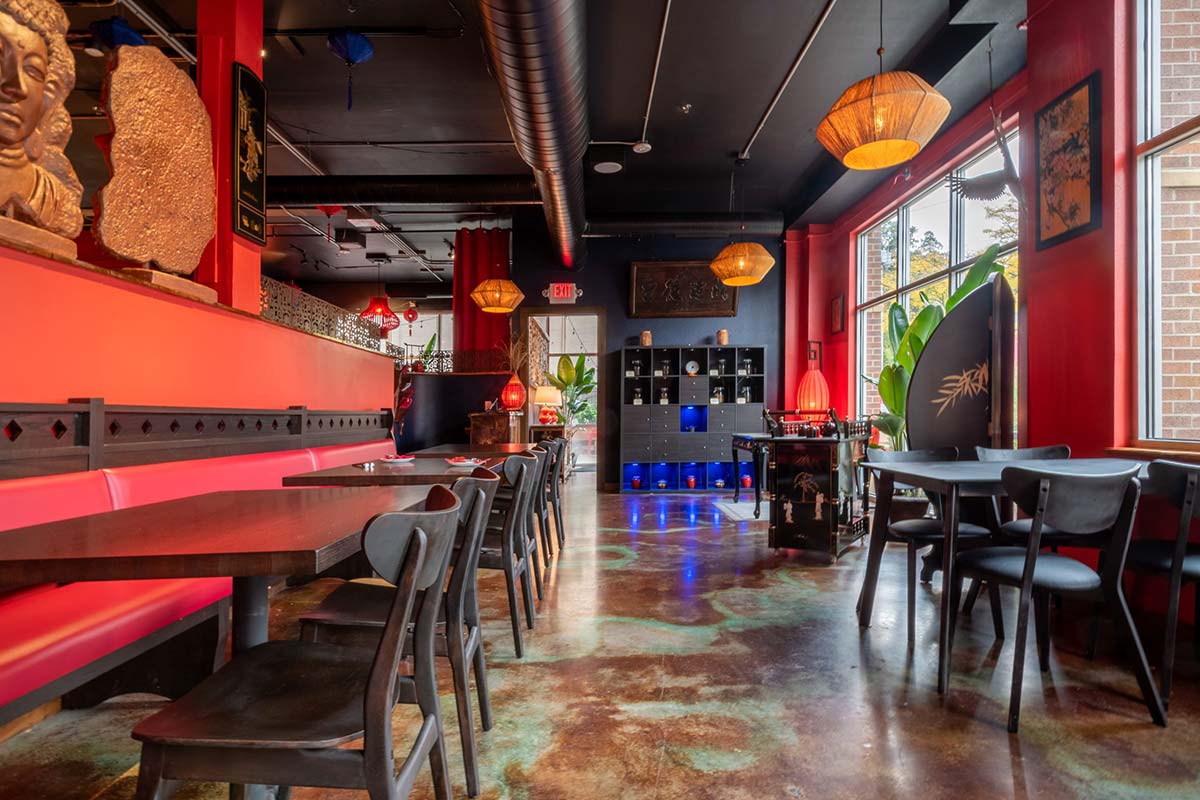
To learn more about branded environments and our interiors team visit our Interior Design service page!
- Antonio Damasio, Professor of Psychology, Philosophy, and Neurology, at the University of Southern California.









